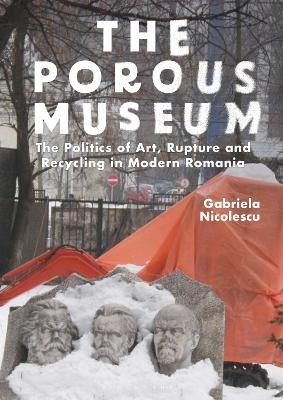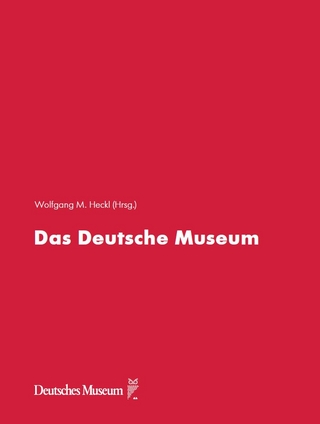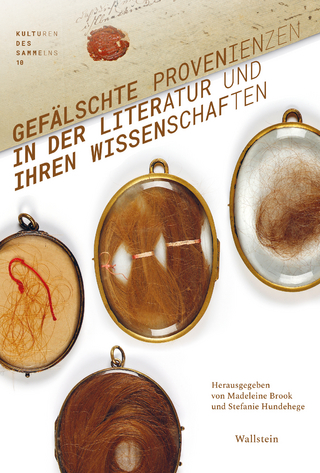
The Porous Museum
Bloomsbury Visual Arts (Verlag)
978-1-350-19663-6 (ISBN)
Nicolescu's fascinating study starts with a focus on a dumped and smashed statue of the revolutionary figureheads Marx, Engels and Lenin in the museum's rear yard as an expression of the complicated journey of modern Romania. She considers questions of recycling and rupture, with some exhibits and practices carried over from one regime to another, whilst others have been discarded in favour of the completely new. Through this process, the museum can been seen as a microcosm of the wider nation state and the ways in which the past is remembered or rejected.
The interdependency of politics, ethics and aesthetics that Nicolescu terms 'porosity' is an attribute of museums all over the world. Applying original anthropological research to key ethnographic museums in Romania and elsewhere in Europe, the book moves beyond regional and media stereotypes by arguing for the influence of local oral histories on national history.
Gabriela Nicolescu is an Exhibition Maker, a Writer and a Post-Doctoral Researcher with the School of Anthropology and Museum Ethnography at the University of Oxford, UK. She has published in Critique of Anthropology, the Journal of Design History, the Journal of Material Culture, World Art, East Central Europe and Anthropology & Aging.
Acknowledgements
Abbreviations
INTRODUCTION: POROUS MUSEUMS
Museums as expandable
Museums as garbage and concealing
Museums as continuities of practice
Synopsis of Chapters
1. TWO DIFFERENT DOORS: BUREAUCRACY AND PLAYFULNESS
Living among stereotypes
Closed rooms
‘Socialist’ white and tidy
‘Anti-communist’ colour and bricolage
Negotiating a white gown
In search of creativity: the EMYA prize
Conclusion
2. THE STAGING OF HISTORY: ETHNOGRAPHY IN MUSEUM’S WAVERING ARCHIVES
Why silencing the socialist past?
Golden archives: aristocrats and peasants in the capital city
Finding inspiration in Stockholm and Oslo
Partial archives: partial truths
1950’s relocations
Bucharest 1957 exhibition: the difficulty of inscribing difference
Where are the peasants? Replies from a photo archive
Conclusion
3. SOCIALIST MULTIPLICATION AND THE USE OF THE FUTURE TENSE
Multiplication of employees and the school of seriality
Work as a gift: the art of bureaucracy and numbers
1960s: Marathon of exhibitions and events and technocrat dispersion
The secret police searches the soul of Tancred Bana?eanu
Socialism goes global: Travelling folk art exhibitions to Austria, Belgium, China, Mexico, Switzerland and Vietnam
Endless multiplication of collections: the storage fever puts the museum to a halt
4. A QUESTION OF (IN)VISIBILITY
The 1977 earthquake: new visibility and the media
Socialist artizanat, art naïve and the mix of values
Back to the stores: what museums do not need
1980s: Eating at the Museum of the Communist Party
Hunger and collapse
5. WHAT IS LEFT AFTER A REVOLUTION… FRAGMENTS
Priests in the museum: a story of exorcism and sacralisation
1990s’ Neo-Byzantinism
Paper clips: fragmentation and assemblage
‘Alive’ museography: ‘when museums disrupt and heal’
Conclusion
6. THREE FACES OF COMMUNISM
Anger: Communism as the Plague
Practice: The Continuity of Stores
Irony and playfulness: The Art of Bricolage
Conclusion
7. CONCLUDING CHAPTER
The porous museums: tales of continuity and rupture in central and eastern Europe
The politics of display and peasants out of history
Little space for modernity: the missing metal spoon
Notes
References
List of Illustrations
Index
| Erscheinungsdatum | 12.08.2023 |
|---|---|
| Zusatzinfo | 80 bw illus |
| Verlagsort | London |
| Sprache | englisch |
| Maße | 156 x 234 mm |
| Themenwelt | Kunst / Musik / Theater ► Kunstgeschichte / Kunststile |
| Geisteswissenschaften ► Geschichte ► Hilfswissenschaften | |
| Sozialwissenschaften | |
| ISBN-10 | 1-350-19663-0 / 1350196630 |
| ISBN-13 | 978-1-350-19663-6 / 9781350196636 |
| Zustand | Neuware |
| Informationen gemäß Produktsicherheitsverordnung (GPSR) | |
| Haben Sie eine Frage zum Produkt? |
aus dem Bereich


